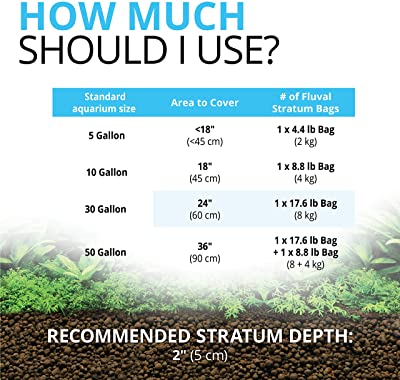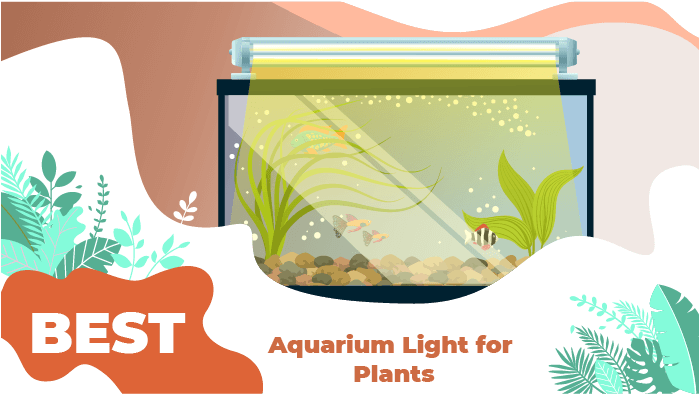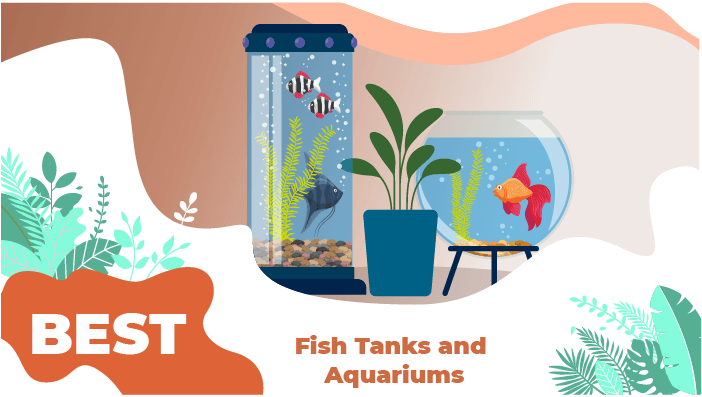The 5 Best Substrate For Planted Tanks
This page contains affiliate links. We may earn money or products from the companies mentioned in this post through our independently chosen links, which earn us a commission. Learn More

Nothing is more beautiful than a lush, green aquarium full of thriving plants. A planted tank is certainly a sight to behold, but it may be more challenging to achieve than you imagine.
Live plants require a great deal of light to be able to produce the energy they need to grow. They also require certain nutrients, some of which they can absorb from your tank water, but most should come from tank substrate.
In this article, we’ll talk about tips for cultivating a planted tank and provide some tips for choosing the best substrate. You’ll also see our top 5 picks for the best substrate for planted tanks.
We highly recommend looking at the comparison table we have below where we highlighted the features of each product. You’ll also find more detailed information about each product later in the article.
Compare Best Substrate For Planted Tanks
|
Brand
CaribSea |
Brand
Aqua Design Amano (ADA) |
Brand
Seachem |
Brand
Fluval |
Brand
Mr. Aqua |
|
Materials
Stone |
Materials
Plant-based soil |
Materials
Fluorite |
Materials
Volcanic soil |
Materials
Soil, organic and inert ingredients |
|
Benefits
Nutritionally complete, supports root growth |
Benefits
Dark color, organic ingredients, nutrient-rich |
Benefits
Maintains pH, rich in nutrients |
Benefits
Mineral-rich, won’t compact |
Benefits
Long-lasting, fertilized, dark color |
What To Look For In A Planted Tank Substrate?
Substrate is simply the material you choose to line the bottom of your tank. In a fish-only aquarium it serves a primarily aesthetic purpose but, for planted tanks, it serves as a rooting medium for live plants and also provides nutrients to fuel their growth.
Here are some important things to look for in a substrate for planted tanks:
- All-natural materials. Anything you put in your aquarium has the potential to impact the health and wellness of your fish, so make sure the substrate you choose is all-natural and non-toxic.
- Rich in nutrients. The entire point of using planted tank substrate is to benefit your plants, so choose a substrate that is rich in the nutrients plants need to grow.
- Won’t cloud tank water. Most planted tank substrate needs to be rinsed well before use, so check the bag and follow the instructions to prevent it from immediately clouding tank water.
- Long-term use. Some planted tank substrates need to be replaced every few months as the nutrient content is drained while others can last for the lifetime of your tank. Choose wisely!
Our Top Picks For The Best Substrate For Planted Tanks
Now that you have a better idea what to look for in a planted tank substrate, it’s time to start shopping! Keep reading to see our top 5 picks for the best substrate for planted tanks.
CaribSea Eco-Complete Planted Aquarium Substrate
Product Info
- Brand: CaribSea
- Materials: Stone
- Benefits: Nutritionally complete, supports root growth
- Nutritionally complete for live plants
- Naturally porous, reduces waste buildup in tank
- Creates a natural appearance in tank
- May change the pH of tank water
ADA Aqua Soil Amazonia Substrate
Product Info
- Brand: Aqua Design Amano (ADA)
- Materials: Plant-based soil
- Benefits: Dark color, organic ingredients, nutrient-rich
- Natural earth color, works well with plants
- Plant-based soil very rich in nutrients
- Maintains slightly acidic pH in tank
- More expensive than many options
- May cloud the tank during the first few days (settles quickly)
Seachem Flourite Black Clay Gravel
Product Info
- Brand: Seachem
- Materials: Fluorite
- Benefits: Maintains pH, rich in nutrients
- Very long shelf-life, lasts for life of tank
- Provides all essential nutrients for plants
- Maintains pH and won’t harm tank
- May be dusty at first, needs to be rinsed
Fluval Plant & Shrimp Stratum Plant Care
Product Info
- Brand: Fluval
- Materials: Volcanic soil
- Benefits: Mineral-rich, won’t compact
- Naturally dark color with light texture
- Made of mineral-rich volcanic soil
- Won’t compact, ideal for root growth
- Fairly expensive compared to some options
- May change aquarium water pH
Mr. Aqua N-MAR-066 1 L Fine Pet Habitat Water Plant Soil
Product Info
- Brand: Mr. Aqua
- Materials: Soil, organic and inert ingredients
- Benefits: Long-lasting, fertilized, dark color
- Contains organic ingredients
- Long-lasting fertilizer for planted tanks
- Prolongs water exchange periods
- Sold in smaller bags than some brands
- Can be very dusty, requires a lot of rinsing
Tips For Cultivating A Planted Aquarium
A planted tank is a goal many aquarium hobbyists seek to accomplish, but it is not necessarily easy. It takes a good bit of planning to arrange your tank properly for plants and to choose the right plants for your system. You also need to think about the arrangement for your plants, the spacing, and what nutrients they need to survive.
Here are some simple tips for cultivating a planted aquarium:
- Choose a planted tank substrate appropriate for the type of plants you have as well as the number – a heavily planted tank may need a different substrate than one with a few plants.
- Plan to use several inches of substrate in your planted tank – you’ll need enough to firmly root your plants, so they don’t come loose.
- Arrange your plants in a way that doesn’t obstruct open swimming space – place taller plants near the back and sides of the tank with smaller plants up front, leaving the middle largely open.
- Equip your tank with a full-spectrum lighting system and leave your tank lights on for 8 to 12 hours a day – this will ensure that your plants get the light they need to grow.
- Prune your plants as needed to prevent them from growing out of control – you can also take cuttings to propagate more plants to use in your tank.
- Add your substrate to the tank and fill it with water but let it cycle for at least a week or two so the chemical levels stabilize – then you can add your plants and fish.
Now that you know more about cultivating a planted tank, you’re ready to start shopping for supplies. Take what you’ve learned here to choose the best substrate for your planted tank!
Final Remarks
Cultivating a planted tank is a major accomplishment for any aquarium hobbyist and, with the right planning and advice, you can make it a reality. The key to keeping your tank lush and thriving is to choose the right substrate to keep your plants firmly rooted and to provide the nutrients they need to grow and spread.
If you’re still not sure where to start in looking for a substrate for planted tanks, try out one of the top 5 best planted tank substrates we’ve reviewed above. Good luck!





























